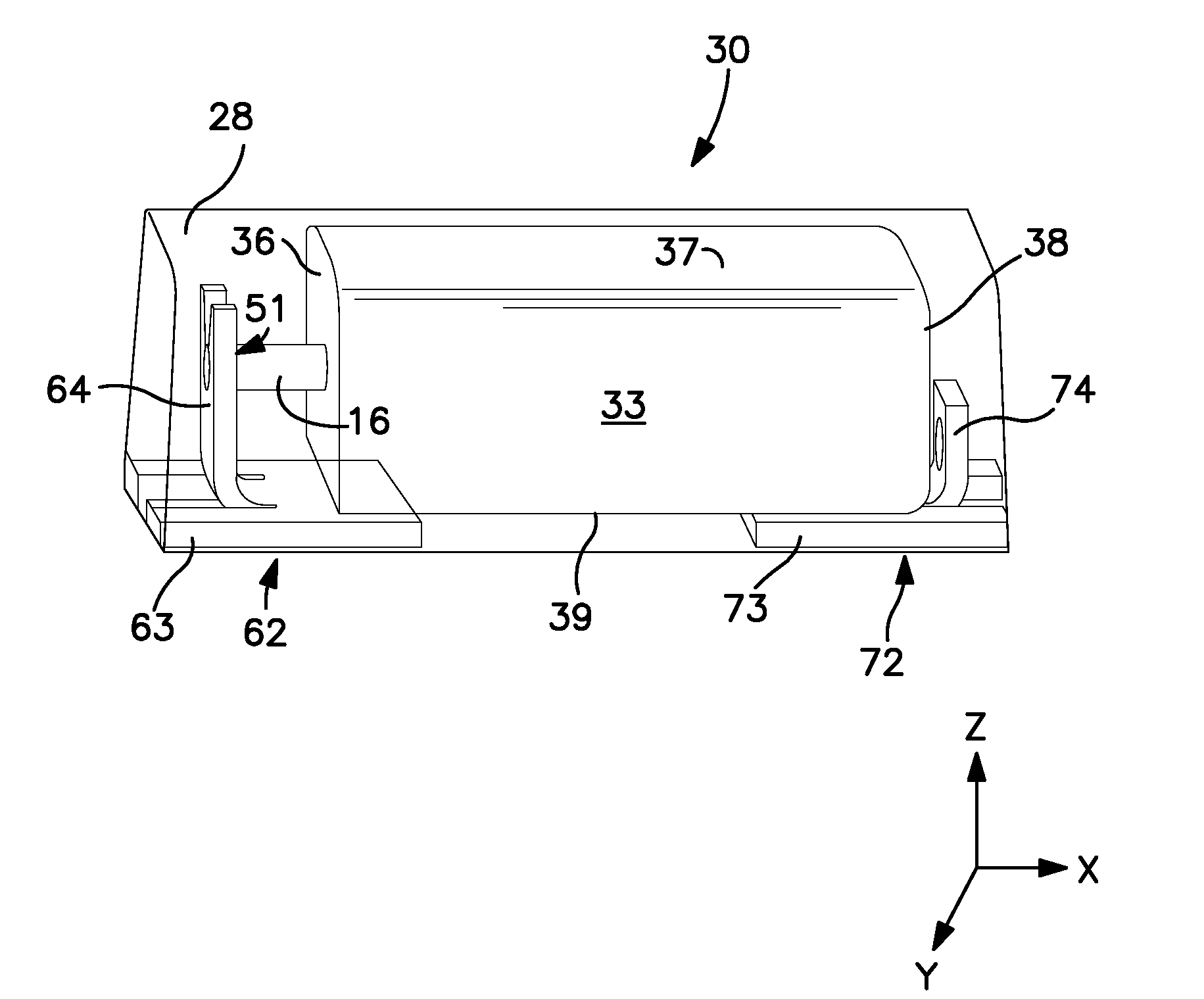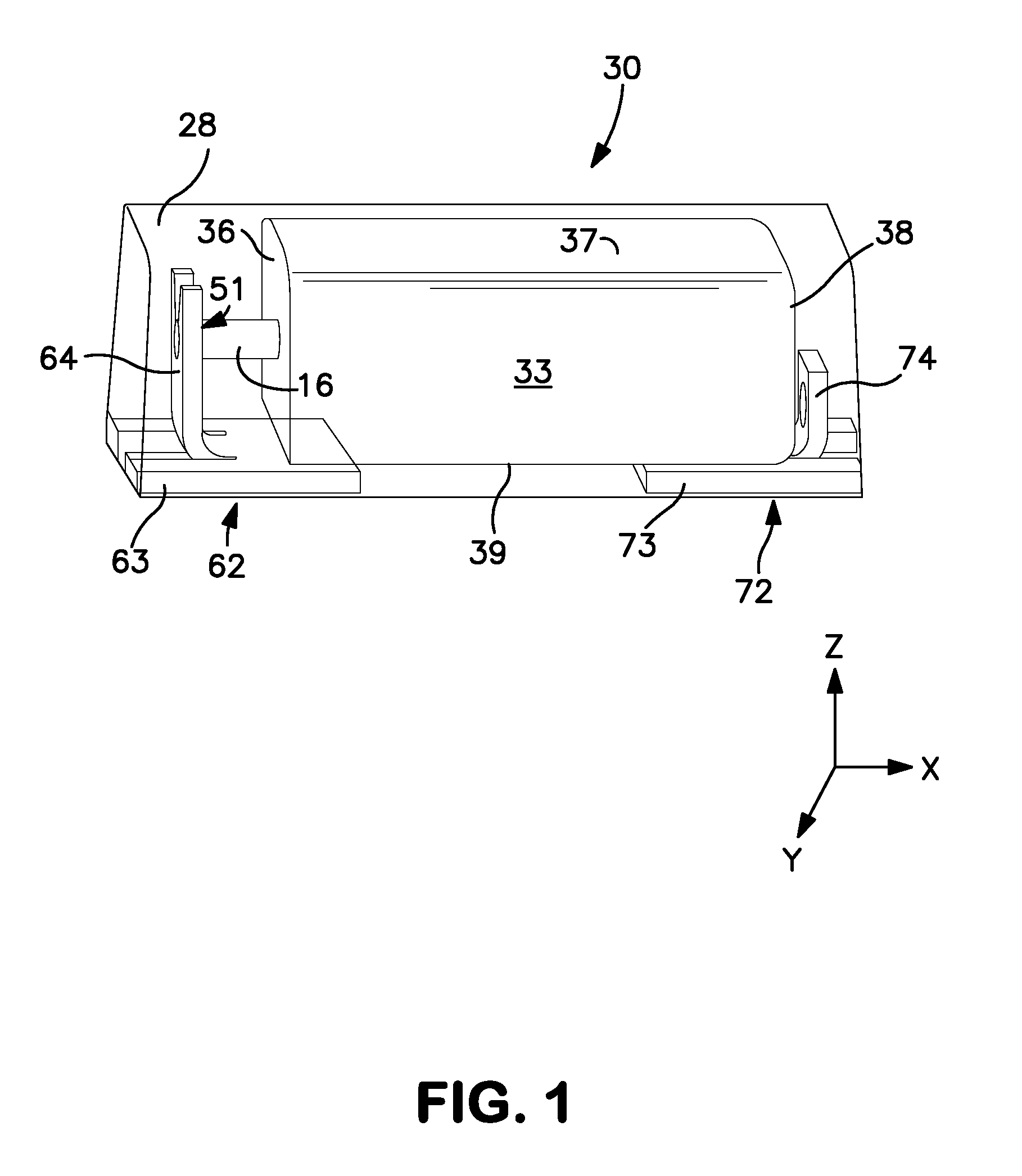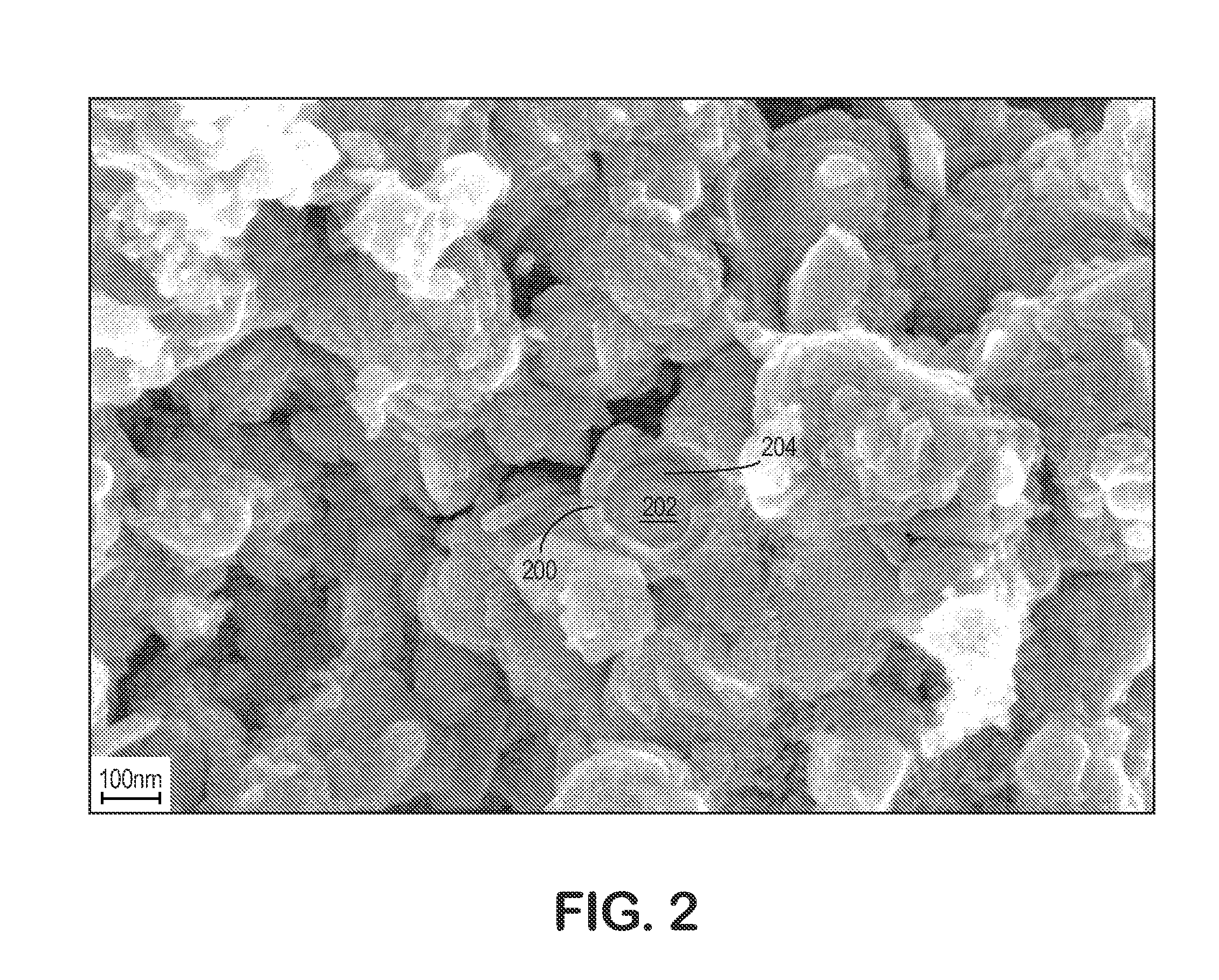Solid Electrolytic Capacitor Containing an Improved Manganese Oxide Electrolyte
a technology of solid electrolytic capacitor and manganese oxide, which is applied in the manufacture of electrolytic capacitors, variable capacitors, electrolytic capacitors, etc., can solve the problems of poor electrical performance, and large amount of manganese dioxid
- Summary
- Abstract
- Description
- Claims
- Application Information
AI Technical Summary
Benefits of technology
Problems solved by technology
Method used
Image
Examples
example 1
150,000 μF*V / g Tantalum Powder (Capacitors 100 μF / 4V)
Initially, 3×100,000 capacitor element samples were formed from tantalum anodes having a size of 1.65 mm (length)×1.15 mm (width)×0.85 mm (thickness). Each anode was embedded with a tantalum wire, pressed to a density of 5.85 g / cm3, and sintered at 1270° C. for 20 minutes. The tantalum anode was anodized in an orthophosphoric acid / water solution having a conductivity of 8.6 mS / cm and temperature of 85° C. with a forming voltage of 11 volts. The samples were initially dipped into an aqueous solution of manganese(II) nitrate (1150 kg / m3) for 150 seconds and then decomposed at 250° C. to achieve the MnO2 electrolyte. This step was repeated eight times.
Thereafter, a first set of samples was dipped into an aqueous solution of manganese(II) nitrate (1300 kg / m3) and 3 g / dm3 of a dispersant (Spolostan 4P, a sodium salt of naphthalene sulfonic acid, polymerized with formaldehyde and produced in Enaspol, Czech Republic), and then decomposed...
example 2
70,000 μF*V / g Tantalum Powder (Capacitors 220 μF / 6.3V)
Initially, 2×100,000 capacitor element samples were formed from tantalum anodes having a size of 1.8 mm (length)×2.45 mm (width)×1.35 mm (thickness). Each anode was embedded with a tantalum wire, pressed to a density of 6.1 g / cm3, and sintered at 1295° C. for 20 minutes. The tantalum anode was anodized in an orthophosphoric acid / water solution having a conductivity of 8.6 mS / cm and temperature of 85° C. with a forming voltage of 9 volts. The samples were dipped into a conventional aqueous solution of manganese(II) nitrate (1050 kg / m3) for 150 seconds and then decomposed at 250° C. This step was repeated two times. Next, the samples were dipped into a conventional aqueous solution of manganese(II) nitrate (1150 kg / m3) for 150 seconds and then decomposed at 250° C. This step was repeated eight times. Thereafter, a first set of samples was dipped into an aqueous solution of manganese(II) nitrate (1300 kg / m3) and 3 g / dm3 of Spolostan...
example 3
80,000 μF*V / g Niobium Oxide Powder (Capacitors 220 μF / 6.3V)
Initially, 3×20,000 capacitor element samples were formed from NbO anodes having a size of 3.5 mm (length)×2.7 mm (width)×1.65 mm (thickness). Each anode was embedded with a tantalum wire, pressed to a density of 3.1 g / cm3, and sintered at 1460° C. for 20 minutes. The NbO anodes were anodized in an orthophosphoric acid / water solution having a conductivity of 8.6 mS / cm and temperature of 85° C. with a forming voltage of 15V. The samples were dipped into a conventional aqueous solution of manganese(II) nitrate (1150 kg / m3) for 150 seconds and then decomposed at 200° C. This step was repeated six times. Thereafter, a first set of samples was dipped into an aqueous solution of manganese(II) nitrate (1300 kg / m3) and 3 g / dm3 of Spolostan 4P and then decomposed at 200° C. This step was repeated two times. A second set of the samples was dipped into an aqueous solution of manganese(II) nitrate (1300 kg / m3) and 3 g / dm3 of Erkantol NR...
PUM
| Property | Measurement | Unit |
|---|---|---|
| Temperature | aaaaa | aaaaa |
| Temperature | aaaaa | aaaaa |
| Temperature | aaaaa | aaaaa |
Abstract
Description
Claims
Application Information
 Login to View More
Login to View More - R&D
- Intellectual Property
- Life Sciences
- Materials
- Tech Scout
- Unparalleled Data Quality
- Higher Quality Content
- 60% Fewer Hallucinations
Browse by: Latest US Patents, China's latest patents, Technical Efficacy Thesaurus, Application Domain, Technology Topic, Popular Technical Reports.
© 2025 PatSnap. All rights reserved.Legal|Privacy policy|Modern Slavery Act Transparency Statement|Sitemap|About US| Contact US: help@patsnap.com



